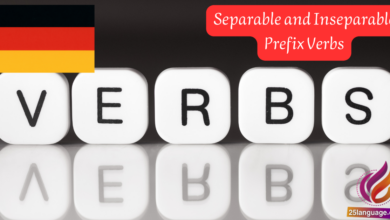Difference Between dass and das

Understanding the difference between “dass” and “das” is essential for mastering the German language, yet it frequently enough trips up even the most dedicated learners.While these two words might sound similar, they serve distinct purposes—one is a conjunction that introduces clauses, while the other is a definite article akin to “the” in English. By the end of this lesson, you’ll confidently navigate sentences and enhance your German communication skills!
Understanding the Distinctions Between ‘dass’ and ‘Das’ in German
In the German language, the words “dass” and “das” are frequently confused by learners due to their similar pronunciations. Though, they serve distinctly different grammatical functions. “Das” is a definite article or a pronoun meaning “the” or “that” in English, while “dass” is a conjunction equivalent to “that” in English, used to introduce subordinate clauses.Recognizing the context in which each word is used is crucial for correct usage. Here are some key points to remember:
- Das (definite article/pronoun): Used before a noun.
- Dass (conjunction): Used to introduce a dependent clause.
Such as,in the sentance „Das Auto ist neu.“, which means “The car is new.”, “das” is a definite article describing “Auto” (car). Conversely, in the sentence „Ich weiß, dass es regnet.“, meaning “I know that it is raining.”, “dass” introduces the dependent clause “es regnet” (it is raining), indicating what the speaker knows.Understanding these distinctions will help you enhance your German writing and speaking accuracy.
| German Example | Rule | English Translation |
|---|---|---|
| Das Buch ist interessant. | Use “das” as a definite article. | The book is engaging. |
| Er sagt, dass er kommt. | Use “dass” to introduce a clause. | He says that he is coming. |
| Das Wetter ist schön. | Use “das” as a pronoun. | The weather is nice. |
| Ich hoffe, dass du kommst. | use “dass” in a subordinate clause. | I hope that you come. |
Clarifying the Role of ‘Dass’ and ‘Das’ in Sentence Structure
In German, the words ‘dass’ and ‘das’ are frequently enough confused due to their similar pronunciation but distinct meanings and functions. ‘Das’ is a definite article or a pronoun meaning ‘the’ or ‘that’ in English, used to refer to specific nouns, whereas ‘dass’ is a conjunction meaning ‘that,’ primarily used to introduce dependent clauses. Understanding this distinction is crucial for proper sentence structure in german. here are some key points to remember:
- Das: Used to refer to nouns.
- Dass: Used to link clauses, indicating that something is true or exists.
For example, consider the sentences: Das Buch ist interessant. (The book is interesting.) here, ‘das’ specifies ‘the book.’ In contrast, Ich denke, dass das Buch interessant ist. (I think that the book is interesting.) Here, ‘dass’ introduces the clause ‘that the book is interesting,’ linking it to the main clause ‘I think.’ Understanding how to differentiate and correctly use these two words is foundational for constructing grammatically correct sentences in German.
| German example | Rule | English Translation |
|---|---|---|
| Das Auto ist neu. | • Use ’das’ as a definite article. | The car is new. |
| Ich weiß, dass das Auto neu ist. | • Use ‘dass’ to introduce a dependent clause. | I know that the car is new. |
| Das Essen schmeckt gut. | • ‘Das’ specifies ‘the food.’ | The food tastes good. |
| Sie sagt, dass das Essen gut schmeckt. | • ‘Dass’ links the thoughts. | She says that the food tastes good. |
Navigating common Confusions: Using ‘Dass’ and ‘Das’ Correctly
In German, ”dass” and “das” can be a source of confusion for English speakers, as they might appear similar but serve very different grammatical functions. “Das” is a neuter article, similar to ”the” in english, and is used to refer to nouns. examples include:
- Das Haus (The house)
- Das Auto (The car)
In contrast, “dass” is a conjunction equivalent to “that” in English, typically used to introduce a subordinate clause.For example, in the sentence Ich weiß, dass du kommst (I know that you are coming), “dass” introduces the idea of knowing someone is coming.
When using these terms,it’s crucial to recognize their context. “Das” can also function as a demonstrative pronoun, meaning “this” or “that”. As an example, in the sentence Das ist mein Freund (That is my friend), “das” refers to the person being identified. Conversely, “dass” appears in sentences to express thoughts, such as in Es ist wichtig, dass du lernst (It is indeed vital that you learn). To further illustrate the differences, the following table summarizes the usage:
| German Example | rule | English Translation |
|---|---|---|
| Das Buch | Neuter article for nouns | The book |
| Das ist gut | Demonstrative pronoun | That is good |
| Ich glaube, dass es stimmt | Subordinate clause conjunction | I believe that it is true |
| Es ist schade, dass du gehst | Introduces an opinion or emotion | It is a shame that you are leaving |
Practical Tips for Mastering the Usage of ‘Dass’ and ‘Das’ in Everyday German
In German, “dass” is a conjunction that translates to “that” in English and is primarily used to introduce subordinate clauses.Its function is to link ideas or provide more information about the action described in the main clause. As an example, in the sentence „Ich glaube, dass es morgen regnet.“, the English translation is „I believe that it will rain tomorrow.“. Here, ”dass” connects the belief to the information about the weather. Remember, “dass” is often used in indirect speech, expressing thoughts, beliefs, or statements.
conversely,”das” is a demonstrative pronoun or article that often translates to “the” or “that” in English,and it refers to something specific. For example, in the sentence „Das buch ist interessant.“, the English translation is „The book is interesting.“. Here, “das” specifies which object is being referred to – in this case, “the book.” It’s crucial to remember that “das” can also serve as a pronoun to replace a noun previously mentioned,as in „Ich mag den Film,das ist mein Lieblingsfilm.“, which translates to „I like the movie; that is my favorite film.”.
| German Example | Rule | English Translation |
|---|---|---|
| „Ich weiß,dass du kommst.“ | Use “dass” to introduce a subordinate clause. | „I know that you are coming.” |
| „Das Auto ist neu.“ | Use “das” as a definite article to specify a noun. | „The car is new.” |
| „er sagte, dass er müde ist.“ | Use “dass” in reported speech. | „He said that he is tired.” |
| „Das ist meine Freundin.“ | Use “das” to refer to something mentioned. | „That is my friend.” |
To Wrap It Up
we have explored the crucial distinction between “dass” and “das” in the German language. Remember, “das” serves as a definite article or a pronoun, while “dass” functions as a conjunction, introducing subordinate clauses. Mastering this difference is essential for clear and accurate communication in German, as even small errors can change the meaning of your sentences.
As you continue your language journey, I encourage you to practice these concepts by creating your own sentences and reading more German texts. Look for examples of both “das” and “dass” in context,and don’t hesitate to ask questions when in doubt. The more you immerse yourself in the language, the more confident you will become.
So keep up the great work, and remember: each new concept you learn brings you one step closer to fluency. Schreiben Sie weiter,sprechen Sie weiter – you’re doing fantastic!





























